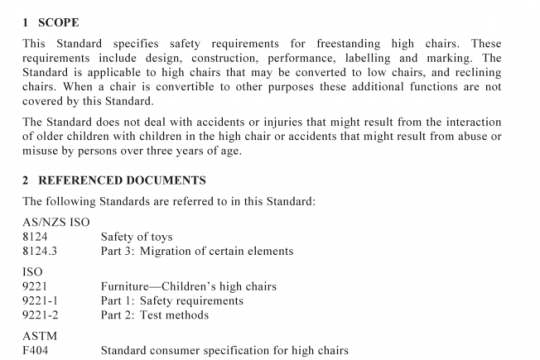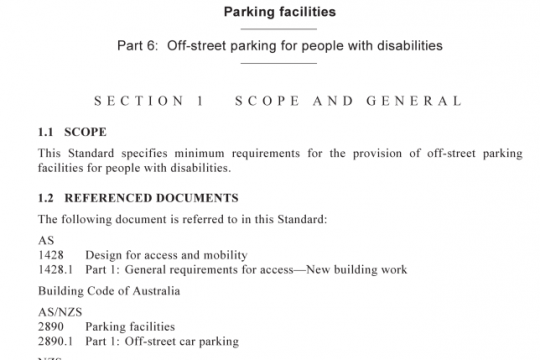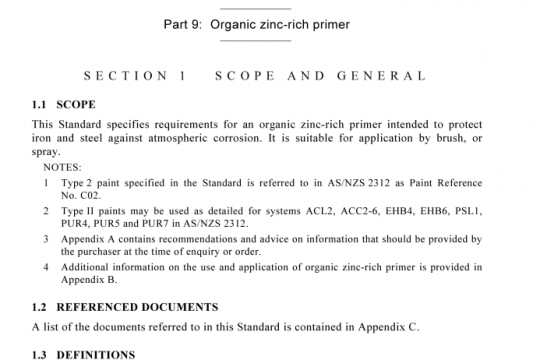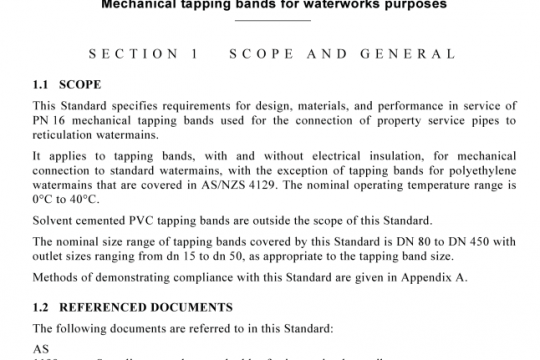AS NZS 60079.26:2015 pdf free
AS NZS 60079.26:2015 pdf free.Explosive atmospheres
The equipment shall comply with the requirements of 4.1.2 or 4.1.3 in the event of a failure of one equipment means of protection, by the provision of a second independent means of protection.
NOTE 1 Types of Protection according to EPL Ga do not require a second independant means of protection, e.g.Ex “ia” (IEC 60079-11), Ex“ma”(IEC 60079-18), Ex“da”(IEC 60079-1).
Electrical connections and permanently connected cables of the equipment sited within an area requiring EPL Ga equipment shall comply with the same Level of Protection required by this standard, for example a cable suitable for EPL Gb containing non-Ex “ia” circuits additionally protected by a flameproof conduit or a cable suitable for EPL Gb provided with earth leakage protection.
NOTE 2 Detailed cable and installation requirements for Types of Protection accepted as achieving EPL Ga beyond intrinsically safe circuits are under consideration in IEC 60079-14.
NOTE 3 Because of ignition hazards which can arise from faults and/or transient circulating currents in the potential equalization system, galvanic isolation in the power and signal connections to the equipment according to 4.1.2 and 4.1.3 is commonly applied along with minimizing the effect of transient fault currents in the potential equalization network by the use of electrical protection equipment such as sensitive earth leakage monitors.
Electrical equipment shall comply with the requirements of two independent Types of Protection that provide EPL Gb. If one Type of Protection fails, the other Type of Protection shall continue to function. The independent Types of Protection shall not have a common mode of failure, except as specified in this clause. Combined types of protection providing EPL Gb shall depend on different physical protection principles.
NOTE 1 An example of a common mode of failure is if an Ex“d”enclosure containing arcing components is installed inside an Ex“e”enclosure. Should the Ex“d” enclosure be compromised, it would also compromise the Ex“e”enclosure.
NOTE 2 The combination of Ex“d” and Ex“q” both depend on the avoidance of flame propagation (same physical protection principle) and may not be useful in combination. In practice, some combinations may not be useful, for example the combination of oil immersion“0”and powder flling“q”.AS NZS 60079.26 pdf free download.




